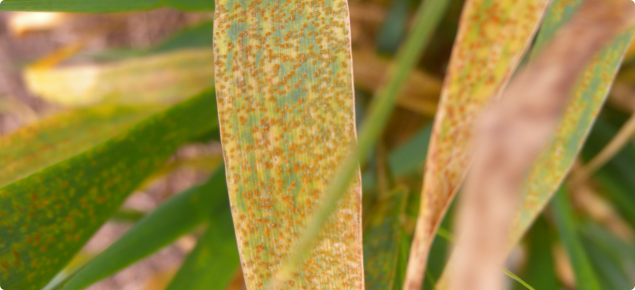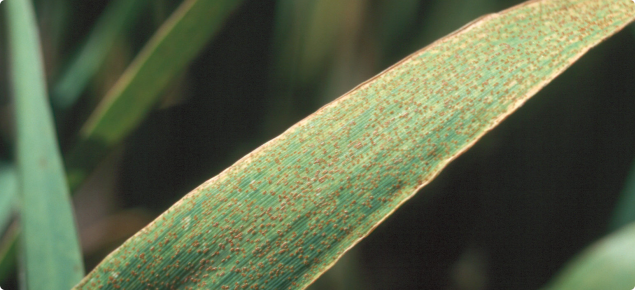A new pathotype designated as 5656P+ was detected in 2016 in Lake Grace, Boxwood Hill, Wellstead, Tambellup amd Williams. This pathotype has virulence for the resistance gene Rph3 similar to the current dominant pathotype 5457P-. This pathotype is not expected to change resistance rankings of varieties currently grown in WA. Growers and agronomists are encouraged to submit samples of any leaf rust finds to the national rust control program for testing.
What is the new pathotype?
This new pathotype of the barley leaf rust pathogen is the third incident in detection of virulence for the Rph3 resistance gene in WA since 2013. The pathotype is identified as 5656P+.
Where and when was it found?
Six samples of leaf rust from barley crops in the Great Southern {Boxwood Hill, Wellstead, Tambellup, Marradong (Williams)} and central Lake Grace areas, were collected in late August to mid October 2016 and sent for analysis to the Australian Cereal Rust Control Program’s (ACRCP) laboratories at the University of Sydney. These samples were collected from Bass, Scope CL and Flinders barley.
Is it known where the new pathotype has come from?
Evidence points to the new pathotype migrating from eastern Australia. This pathotype was first detected in South Australia in 2011. This is potentially the fourth rust pathotype (including three wheat leaf rust pathotypes) to migrate from eastern Autralia in the past six years.
What varieties will be susceptible to this new strain?
Barley varieties such as Bass and Compass which carry only the Rph3 resistance gene will be most affected. The current dominant pathotype 5457P- is also virulent on Rph3, therefore the presence of this new pathotype in WA is not expected pose any additional threat to the varieties currently grown, including those which carry adult plant resistant (APR) genes.
Ongoing monitoring and testing is underway by DPIRD and the ACRCP.
New disease resistance ratings have been released. See the Crop Sowing Guide for further information.


